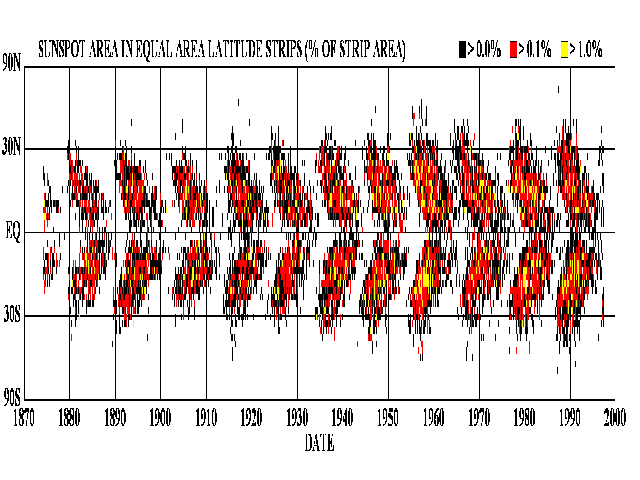
It turns out that sunspots are usually found nearer the Sun's equator than the poles, or in other words, sunspots occur at low latitudes. But there is more to it than that.
Almost all sunspots appear in two bands on the Sun. One band is North and one South of the Sun's equator. The bands are between latitudes of about 10o to 30o North and South of the equator.
Strangely, sunspots do not appear just anywhere at any time in these bands. At the start of the solar cycle they are most likely to appear at the tops of the bands (near 30o North and South).
As the cycle continues two things happen. First, the number of sunspots increases, until it reaches a peak about 5 or 6 years after the start. Secondly, the latitudes at which spots are most often seen changes to lower values. The spots appear nearer and nearer the equator. By the end of the cycle, when there are again only a few spots, most of them will be found near the equator rather than at latitudes of 30o North or South.
Suddenly though new spots will be seen appearing near latitudes 30o North and South and a completely new cycle has started!
If you plot each sunspot's latitude (Y-axis) against the date when each spot first appeared (X-axis) you get the diagram below:

Courtesy of the Yohkoh Public Outreach Project
Can you see why this is called the butterfly diagram ?
In this diagram individual spots aren't plotted. Instead the graph is divided up into little rectangles. The colour of a rectangle tells you how many spots were at that latitude on that date.
White (that is no square) means there were no spots.
Black means there were very few spots.
Red means there are some spots.
Yellow means there are many spots.

|